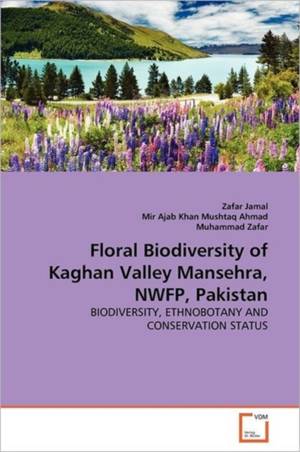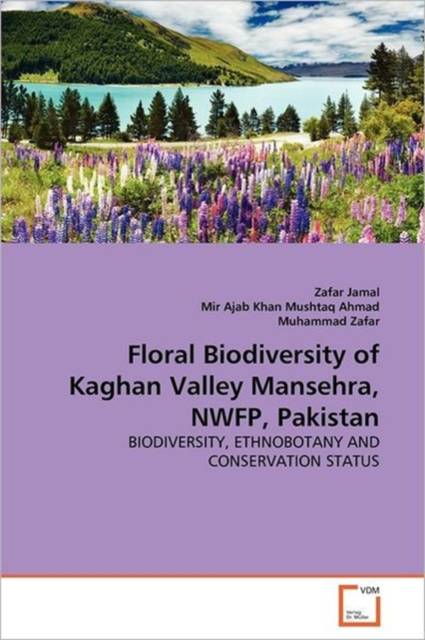
- Afhalen na 1 uur in een winkel met voorraad
- Gratis thuislevering in België vanaf € 30
- Ruim aanbod met 7 miljoen producten
- Afhalen na 1 uur in een winkel met voorraad
- Gratis thuislevering in België vanaf € 30
- Ruim aanbod met 7 miljoen producten
Zoeken
Floral Biodiversity of Kaghan Valley Mansehra, NWFP, Pakistan
BIODIVERSITY, ETHNOBOTANY AND CONSERVATION STATUS
Zafar Jamal, Mir Ajab Khan Mushtaq Ahmad, Muhammad Zafar
Paperback | Engels
€ 77,95
+ 155 punten
Omschrijving
In the modern time, medicinal plant resources are being depleted by the increase of population and excessive biotic activities. If this trend of constant depletion of medicinal plants persists, this may cause an acute paucity of the resources of medicinal plants in future and pose a serious threat to the physical well being of mankind. Hence, the study of plants as a source of medicine has become more important in the context of present global trade scenario, where the cost of allopathic medicines are likely to be beyond the reach of common man. So more folklore of our indigenous knowledge of medicine should be explored and availability of such plants should also be surveyed in each and every part of the country. There exists a considerable diversity in the flora of Kaghan Valley. Bryophytes are represented by 6 species, Pteridophytes by 53 species, Gymnosperms by 12 and Angiosperms by 775 species (i.e., Monocots 136 species and Dicots 639 species). It manifests the typical plant diversity of Himalayan region of Kaghan Valley.
Specificaties
Betrokkenen
- Auteur(s):
- Uitgeverij:
Inhoud
- Aantal bladzijden:
- 252
- Taal:
- Engels
Eigenschappen
- Productcode (EAN):
- 9783639357752
- Verschijningsdatum:
- 3/07/2011
- Uitvoering:
- Paperback
- Afmetingen:
- 152 mm x 229 mm
- Gewicht:
- 372 g

Alleen bij Standaard Boekhandel
+ 155 punten op je klantenkaart van Standaard Boekhandel
Beoordelingen
We publiceren alleen reviews die voldoen aan de voorwaarden voor reviews. Bekijk onze voorwaarden voor reviews.











